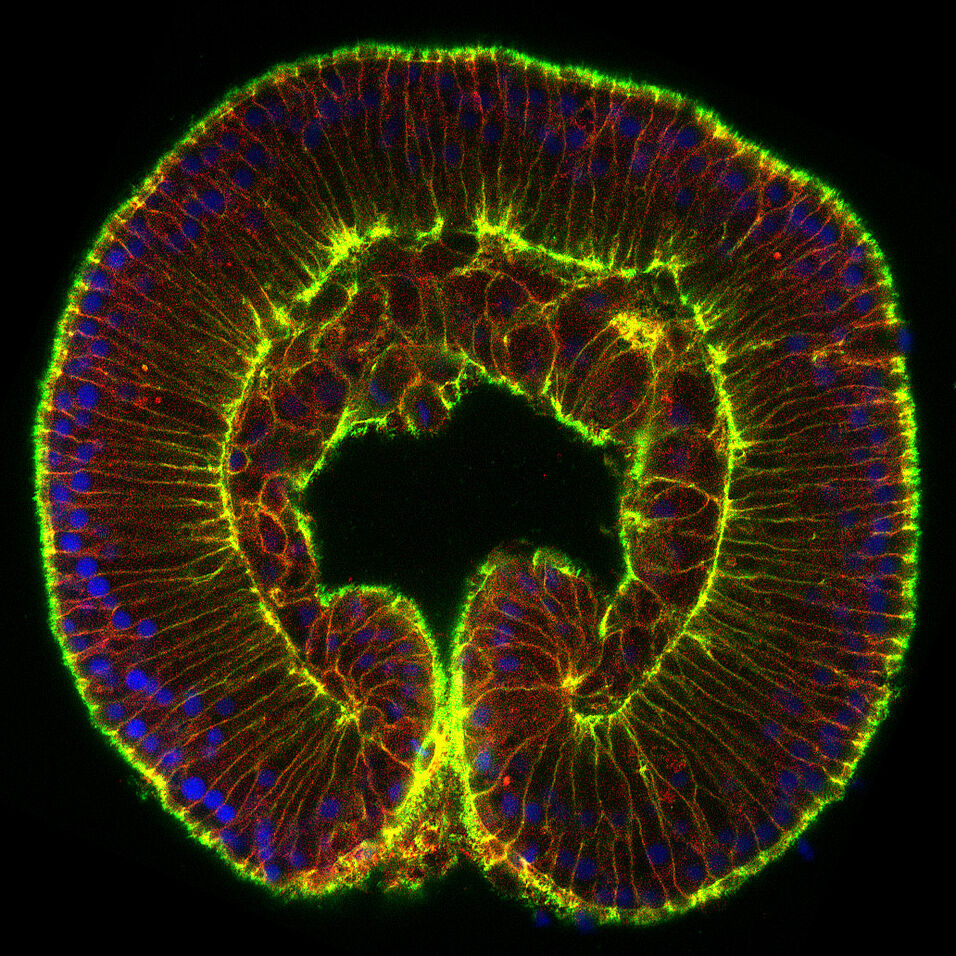Cnidarians (for example, sea anemones and jellyfish) develop from an outer ectodermal and inner endodermal germ layer, whereas bilaterians (for example, vertebrates and flies) additionally have a mesodermal layer as intermediate germ layer. Currently, cnidarian endoderm (that is, ‘mesendoderm’) is considered homologous to both bilaterian endoderm and mesoderm. Here we test this hypothesis by studying the fate of germ layers, the localization of gut cell types, and the expression of numerous ‘endodermal’ and ‘mesodermal’ transcription factor orthologues in the anthozoan sea anemone Nematostella vectensis. Surprisingly, we find that the developing pharyngeal ectoderm and its derivatives display a transcription-factor expression profile (foxA, hhex, islet, soxB1, hlxB9, tbx2/3, nkx6 and nkx2.2) and cell-type combination (exocrine and insulinergic) reminiscent of the developing bilaterian midgut, and, in particular, vertebrate pancreatic tissue. Endodermal derivatives, instead, display cell functions and transcription-factor profiles similar to bilaterian mesoderm derivatives (for example, somatic gonad and heart). Thus, our data supports an alternative model of germ layer homologies, where cnidarian pharyngeal ectoderm corresponds to bilaterian endoderm, and the cnidarian endoderm is homologous to bilaterian mesoderm.

